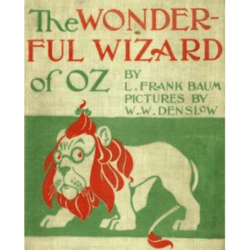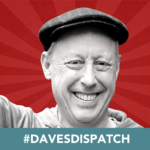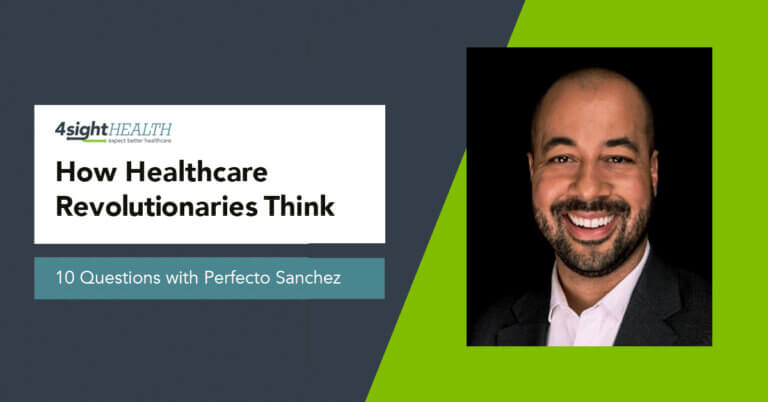March 1, 2022

Healthcare Over the Rainbow (Part 2): The Allegory
In November 2021, I wrote Part 1 of this “Dispatch” to highlight our commentary “Healthcare’s Transformative Digital Bazaar: Exchanges, Platforms and Hybrids Oh My!” and to introduce our November song, “Healthcare Over the Rainbow.” Both the commentary and the song reference the 1939 movie version of L. Frank Baum’s 1901 children’s story “The Wizard of Oz.”
 The commentary explores the intricate economic synergies linking broad digital exchanges with branded digital platforms. Its subtitle riffs on the timeless “Lions, Tigers and Bears, Oh My!” chant that Dorothy, Tin Man and Scarecrow repeat as they pass through the Enchanted Forest.
The commentary explores the intricate economic synergies linking broad digital exchanges with branded digital platforms. Its subtitle riffs on the timeless “Lions, Tigers and Bears, Oh My!” chant that Dorothy, Tin Man and Scarecrow repeat as they pass through the Enchanted Forest.
Our song parodies “Somewhere Over the Rainbow,” Judy Garland’s wistful and soulful lament for escape and adventure. In a similar vein, “Healthcare Over the Rainbow” captures our collective yearning for a healthcare system that is fair, just and affordable.
In his introduction to “The Wizard of Oz,” Baum insists that the book was “written solely to pleasure children of today.” That’s an unusual disclaimer for any book, but particularly one for children. It begs the question as to why Baum felt the need to assert the book’s purpose. Is there more to the story? Academics have debated for decades whether Baum intended his book to be read as an allegory for the raucous populist movement in the 1890s.
Seeking to answer this question, Quentin Taylor penned an entertaining and in-depth article, titled “Money and Politics in the Land of Oz,” in the Winter 2005 issue of “The Independent Review.” Taylor concludes that the story operates on two levels, as both political satire and a literary tale for children,
…the Oz tale is best viewed as a symbolic and satirical representation of the Populist movement and the politics of the age, as well as a children’s story.
Let’s have some fun with this. The balance of this Dispatch will use Taylor’s analysis to detail Baum’s satirical references to 1890s populism and then apply those references to current-day healthcare participants and practices.
Dorothy of Kansas: Populism railed against the elite and their “hard money” policies that strangled economic opportunity for regular Americans. Their problems were real, but their socialist solutions (e.g., nationalizing railroads) lacked coherence. Kansas was the epicenter of populism’s most radical elements. Emerging from this whirlwind, Dorothy is “each of us at our best – kind but self-respecting, guileless but level-headed, wholesome but plucky.” While navigating through the treacherous land of Oz, she confronts dangers head on, seeks the best for all involved and never loses hope.
Medicare-for-All resembles 1890s populism. Its proponents seek a more just healthcare delivery system but fail to appreciate the consequences of a top-down, government-run health system that would misallocate resources and stifle innovation. A modern-day Dorothy could be the take-charge mom who tackles all obstacles in seeking the right healthcare services for her family. Through the burdensome paperwork, disconnected care delivery, poor communication and uneven outcomes, she never loses heart.
The Wicked Witches: The wicked witches represented the banking and industrial barons of the east and the monied railroad and oil interests of the west. When Dorothy’s house lands in Oz, it kills the Wicked Witch of the East and frees the “little people” (Munchkins) who reward Dorothy by giving her the Witch’s silver (not red) shoes. Also a monster, the Wicked Witch of the West had enslaved the Winkies (a thinly disguised metaphor for Asian migrants) and the Flying Monkeys. Her demise when doused with water, by Dorothy frees her subjects and restores prosperity to the realm.
The massive Healthcare Industrial Complex® is a modern-day manifestation of the evil witches. Business, bureaucratic and political forces prey on American society to feed their voracious greed. Rather than deliver the right care at the right time in the right place and the right price, the SYSTEM optimizes its profits through monopoly pricing, regulatory scheming and by gutting reforms. How else can we explain the watered-down surprise billing legislation that Congress enacted last year? Showering the SYSTEM with value will expose its treachery and liberate regular Americans to lead happier, healthier and more productive lives.
Scarecrow and Tin Man: On her journey to the Emerald City, Dorothy first meets the Scarecrow, who is only two days old, lacks a brain and suffers constant ridicule from attacking crows. Scarecrow represents the downtrodden midwestern and western farmers who supported populist policies. Far more than a dumb hick, Scarecrow displays wisdom, resourcefulness and resilience throughout their adventures together. Ultimately, he replaces Oz as the ruler of Emerald City. The Tin Man represents maligned industrial workers and the dehumanizing conditions under which they labor. The Tin Man is rusted, unemployed and lacking a heart, but after Dorothy lubricates him, he joins their quest.
Just as the Wicked Witch of the East robbed the Scarecrow of his brain and the Tin Man of his heart, the SYSTEM enslaves regular Americans by forcing them to consume excessively expensive, fragmented and depersonalized healthcare services that don’t meet vital health and care needs. How else can we explain declining life expectancy, the lack of equitable care access and the opioid plague? Like the liberated Scarecrow and lubricated Tin Man, consumers are fighting back. Their healthcare purchasing decisions reward providers that deliver superior outcomes at competitive prices with great service. They will not be denied.
Lion, Bryan and Oz: last to join the party, the Cowardly Lion represents the populist politician William Jennings Bryant whose famous “Cross of Gold” speech electrified the 1896 Democratic convention. Despite his roar, Bryan was ultimately ineffectual. He twice lost the presidential race to William McKinley. Despite cowering and having claws that don’t scratch, the Lion courageously slays the Great Spider (a metaphor for the corporate trusts) and becomes the king of all animals.
The Wizard of Oz resides in the Emerald City (a metaphor for Washington, D.C. and ineffectual government). Dorothy and friends seek assistance from Oz who sends them on a dangerous mission to kill the Wicked Witch of the West. Like Bryan, Oz is from Nebraska. After killing the Wicked Witch, they return in triumph to the Emerald City, but there’s little Oz can do for them. Exposed as a windbag and conman, Oz partially redeems himself by recognizing Scarecrow’s, Tinman’s and Lion’s attributes as well as by offering to take Dorothy back to Kansas in his air balloon.
Healthcare is full of leaders who give voice to system transformation while sustaining the status quo. It’s not a coincidence that the golden yellow-brick road leads only to Emerald City. The Healthcare Industrial Complex realizes a greater return walking the halls of government than in the competitive marketplace. How many of today’s healthcare leaders can transform, like the Cowardly Lion, to become courageous advocates for revolutionary system change? Time will tell.
“The Wizard of Oz” has entertained and enchanted generations of Americans. Dorothy goes over the rainbow and comes home again. In her adventures, she discovers good and evil, makes friends and leaves Oz in better condition than she found it.
As the band America sang in its hit 1974 song, “Oz never did give nothing to the Tin Man that he didn’t, didn’t already have.” Although daunting and complex, it is within our power to fix America’s broken healthcare system. All we need are Dorothy’s pluck, Scarecrow’s brains, Tin Man’s heart and Cowardly Lion’s courage.
 Read all dispatches from Dave Johnson here.
Read all dispatches from Dave Johnson here.





